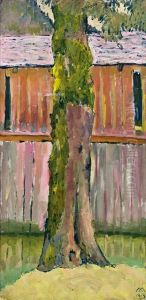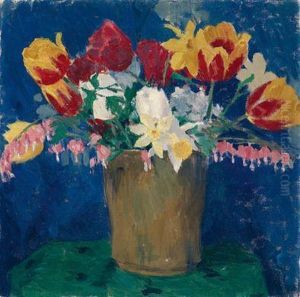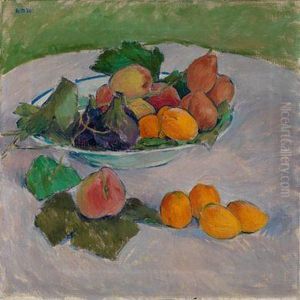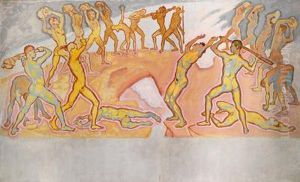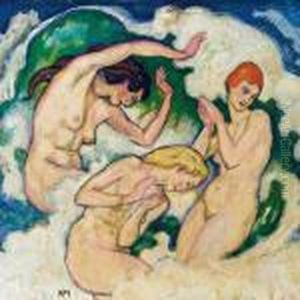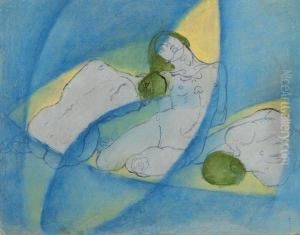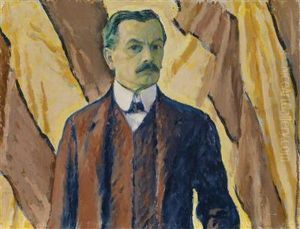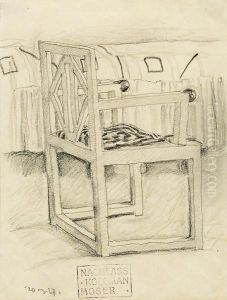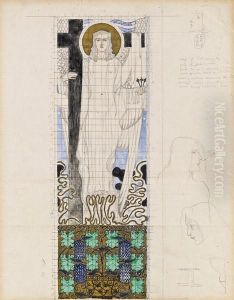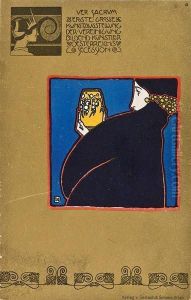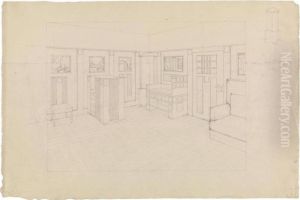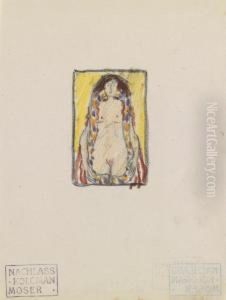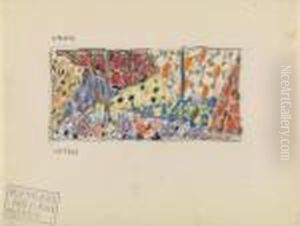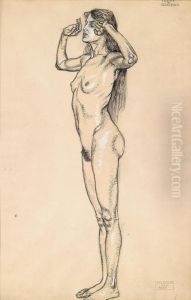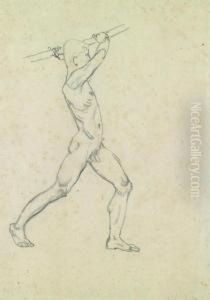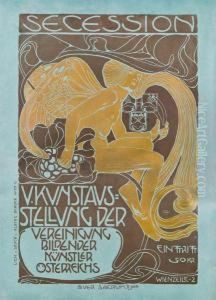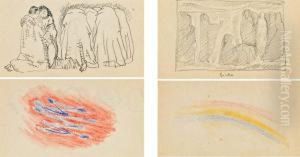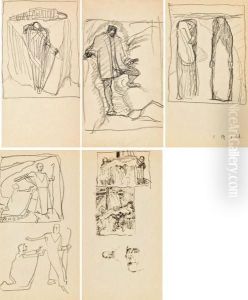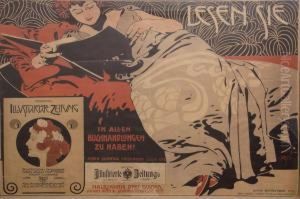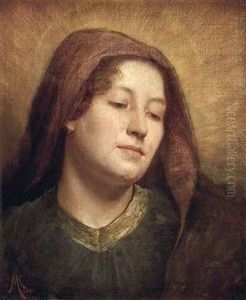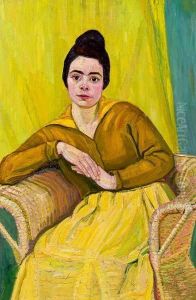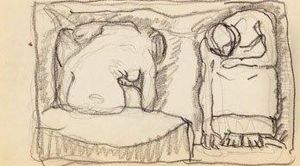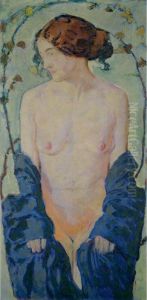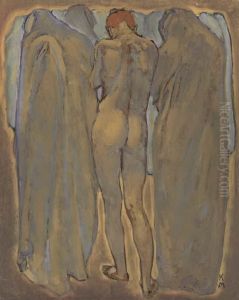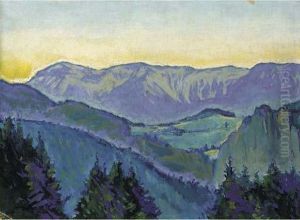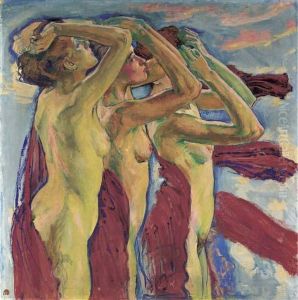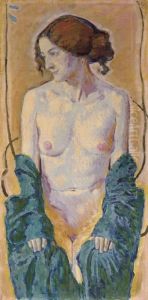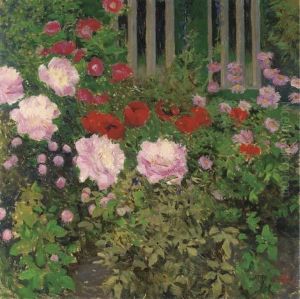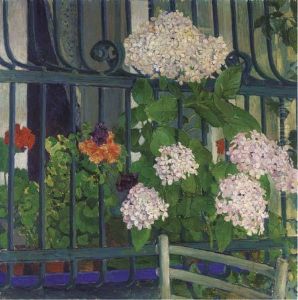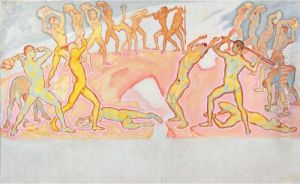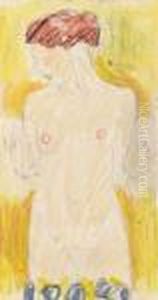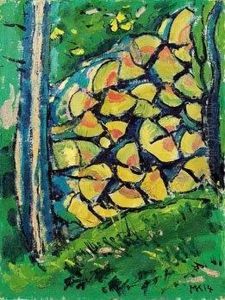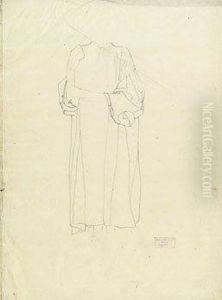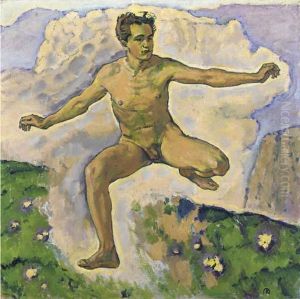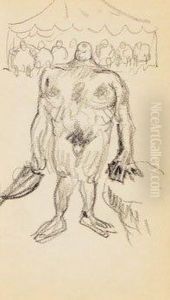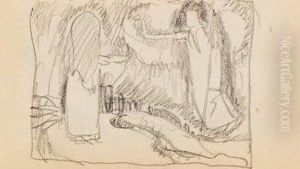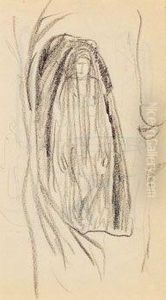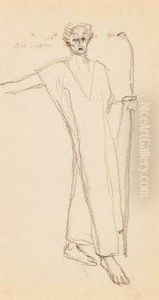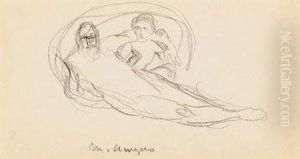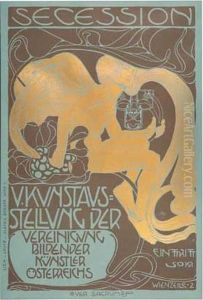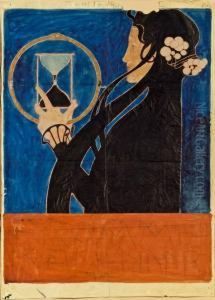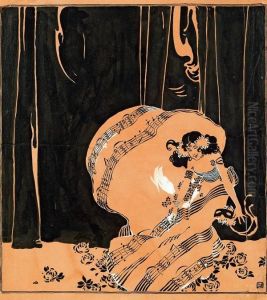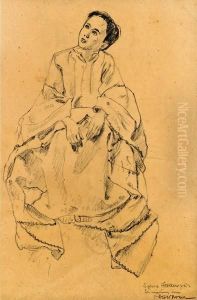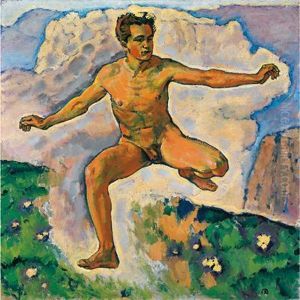Koloman, Kolo Moser Paintings
Koloman Moser, commonly known as Kolo Moser, was an Austrian artist who played a pivotal role in the development of the Viennese Secession, the Austrian branch of the Art Nouveau movement. Born on March 30, 1868, in Vienna, Moser was a versatile artist and designer whose work encompassed a variety of fields, including painting, graphic art, and decorative arts. He studied at the Wiener Akademie and the Kunstgewerbeschule, where he was influenced by the Arts and Crafts movement and the work of English designer William Morris.
Moser's early work was in graphic design, where he gained recognition for his innovative and stylized illustrations, logos, and typefaces. His designs were characterized by their clear, precise lines and often featured floral and geometric patterns. In 1897, Moser, along with Gustav Klimt and others, founded the Vienna Secession, a group that sought to break away from the traditional academic art establishment. As a member of the Secession, Moser contributed to the group's magazine, 'Ver Sacrum', and participated in their exhibitions, helping to define the movement's aesthetic.
In addition to his graphic work, Moser also became known for his contributions to interior design and furniture. He collaborated with architect Josef Hoffmann to establish the Wiener Werkstätte in 1903, an organization dedicated to integrating fine arts with crafts and industrial design. Together, they created a range of decorative art pieces, including glassware, silverware, textiles, and furniture, emphasizing high-quality craftsmanship and materials.
During his career, Moser also experimented with painting, although he was less prolific in this medium compared to his decorative and graphic works. His paintings often displayed the same linear qualities and attention to pattern found in his designs.
Tragically, Moser's artistic career was cut short by illness, and he died relatively young on October 18, 1918, in Vienna. Despite his early death, Moser's influence on the development of modern design was significant. His work is considered a crucial link between traditional craftsmanship and the modernist principles that would dominate the 20th century. Today, his pieces are collected and exhibited in museums around the world, and his contributions to the Viennese Secession and early modern design continue to be celebrated.
